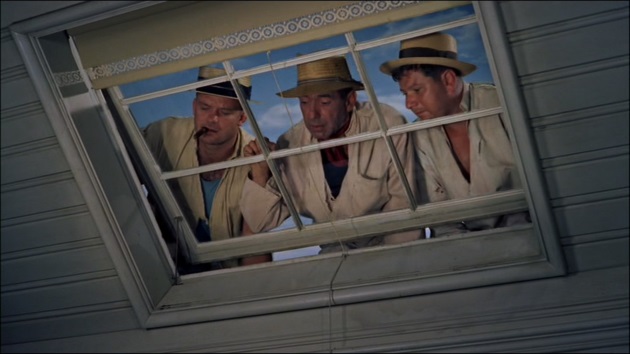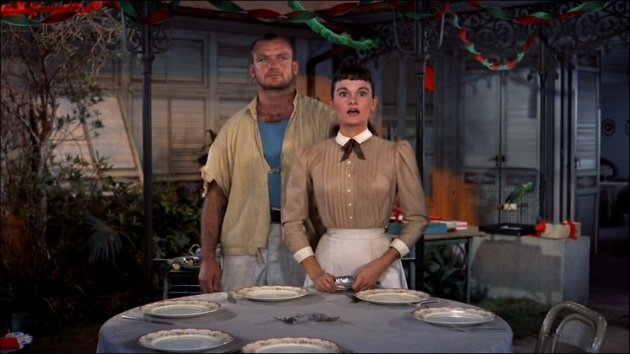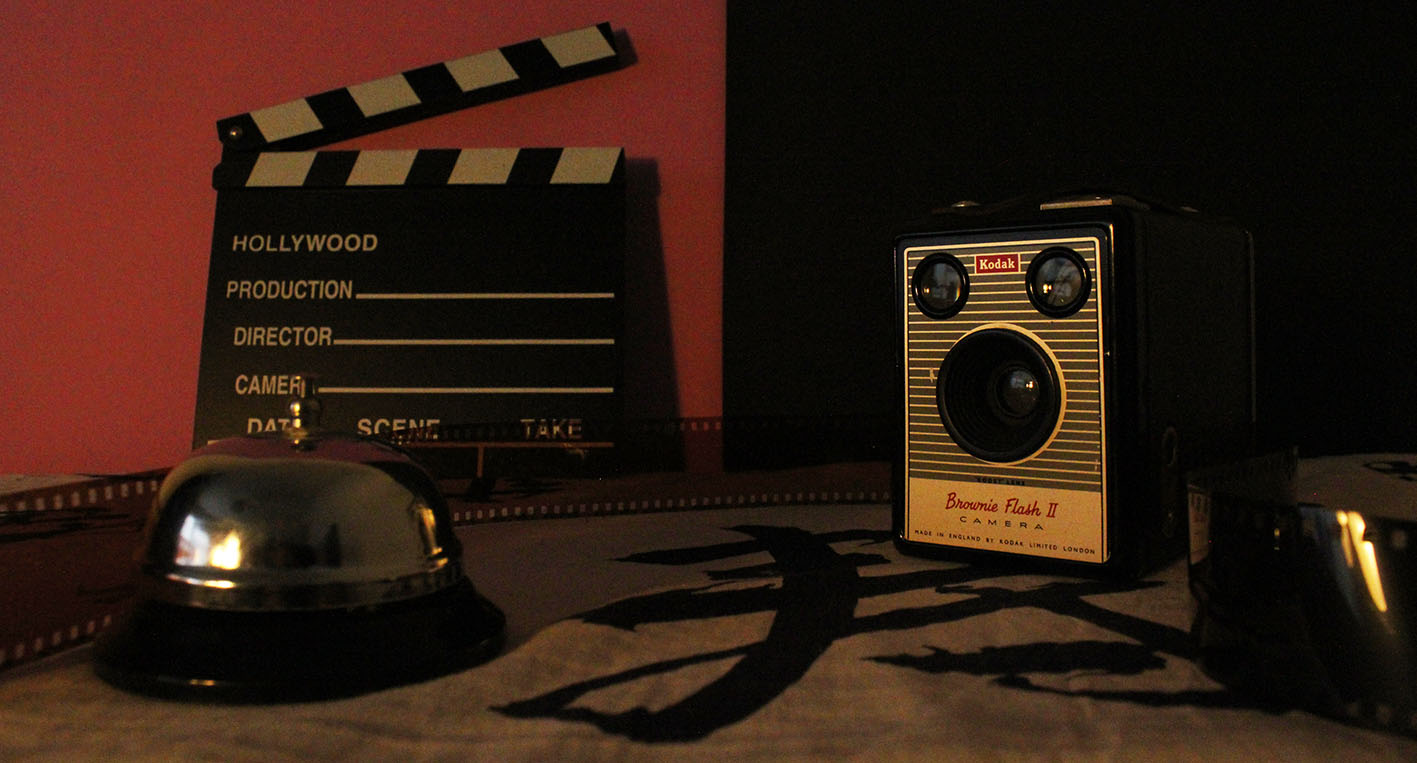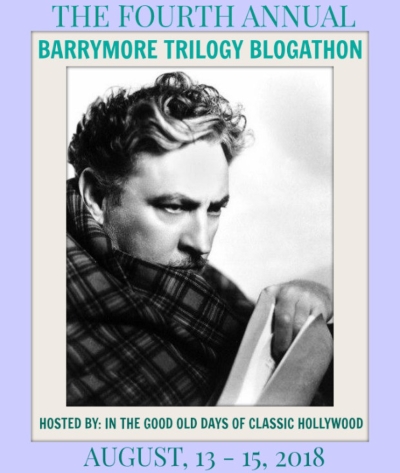Angels With Dirty Faces
***This Review Contains Spoilers***
We’re No Angels was Michael Curtiz’ second Christmas film in a row (despite its release date of July 1955), although unlike White Christmas, We’re No Angels is a less secular affair with its use of biblical references in the tale of three, perhaps not so wise men who bestow gifts on a distressed family at Christmas. We’re No Angels is both sentimental and darkly comic as the Ducotel family in a French colonial town on Devil’s Island (despite none of the cast appearing remotely French) are not massively bothered by having three escaped convicts stay at their adjoining home/business. The three disreputable men go to the Ducotel household intending to rob them but end up getting caught up in the spirit of the season after having a voyeuristic insight to the troubles bestowing the family and their failing general store. We’re No Angels is a bright and colourful affair with the scenes in the bustling port town in particular showing off Curtiz’ directorial skills. The picture even calls to mind Larceny Inc (1942), another film in which a group of criminals inadvertently turn around a failing business.

A large portion of the film’s dark humour comes from Aldo Ray alone in the role of Albert, a sexual offender type convict of whom we don’t know the extent of his activities but the movie hints that it ain’t pretty. Much of the film involves him having an attraction and interacting with the family’s daughter Isabelle (Gloria Talbott), including pinching her derrière and carrying her fainted form into her room with the door closed – once again, the family takes no objection to this. Likewise Isabelle appears to have a serious medical disorder in that she faints multiple times in a short period and even has an unrequited love for her second cousin. Contrasting the more lowly and thuggish Albert is Peter Ustinov as the eloquent and well-spoken Jules. His technique of cracking locks and opening safes involves him lightly touching the outside of a device and then bumping the side of his hand lightly against said device, resulting in the hatch opening – is it this simple in real life or is the movie playing loose with safe and lock-cracking techniques?

We’re No Angels was Humphrey Bogart’s big career opportunity to show off his eccentric comedic side as the con artist Joseph. Bogart was able to display his comic chops in All Through The Night, however, We’re No Angels is more in the vein of The Marx Brothers – just look at the scene in which Joseph successfully cons a customer into buying a suit which is clearly several sizes too small for him. Bogart’s facial expressions and body movements accentuate the performance and even the sight of the tough guy cooking in a kitchen wearing a pink apron somehow doesn’t degrade his machismo. Likewise, Bogie also delivers one of the funniest lines among the pantheon of great Bogart quotes:
“We came here to rob them and that’s what we’re gonna do – beat their heads in, gouge their eyes out, slash their throats. Soon as we wash the dishes.”

Basil Rathbone on the other hand, the Hollywood embodiment of villainy portrays an Ebenezer Scrooge type role as Andre Trochard, the business owner who sees no objection to doing labour on Christmas Day nor having no concern for people’s humanity, just business. We’re No Angels bounces back and forth from zany jokes to more deadpan humour such as the trio’s very slow, drawn-out debate on who should tell Andre not to open the box with their pet snake named Adolf in it. The humorous ending in which the three decide to return to prison was likely brought about by the production code forbidding criminals to be portrayed as sympathetic characters thus their redemptive conclusion – an example of finding a clever solution within the confines of censorship.



